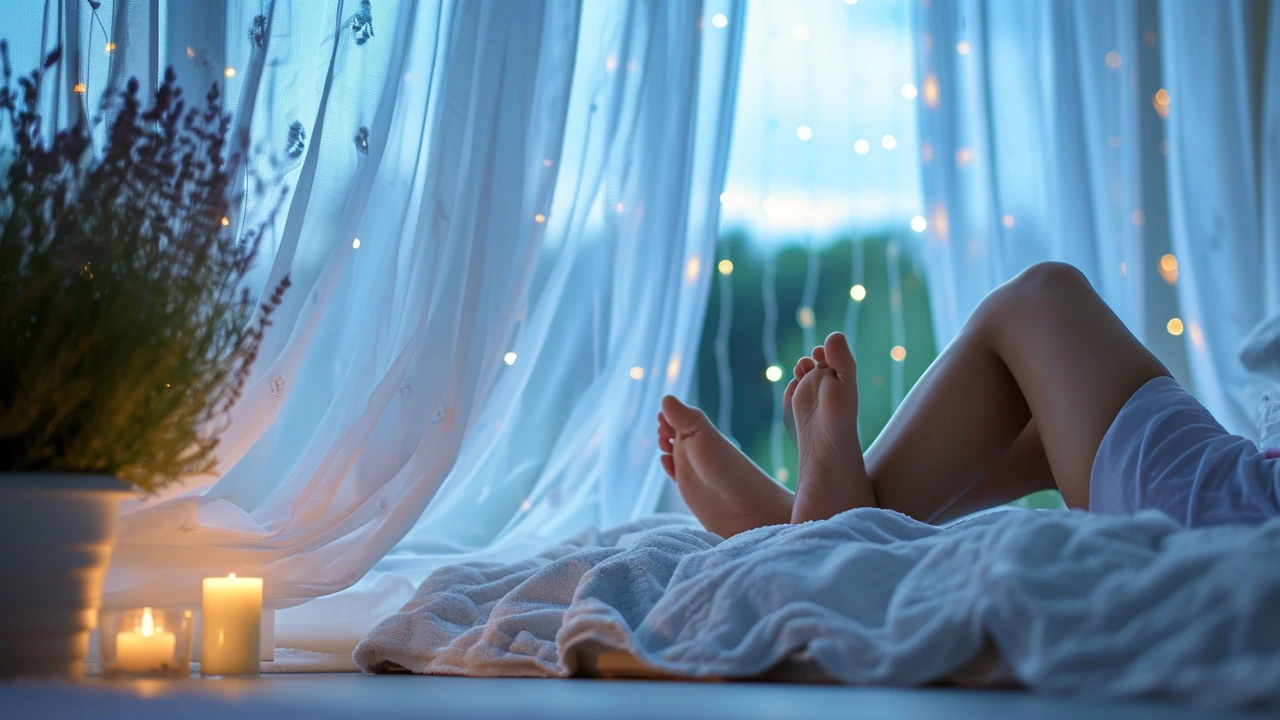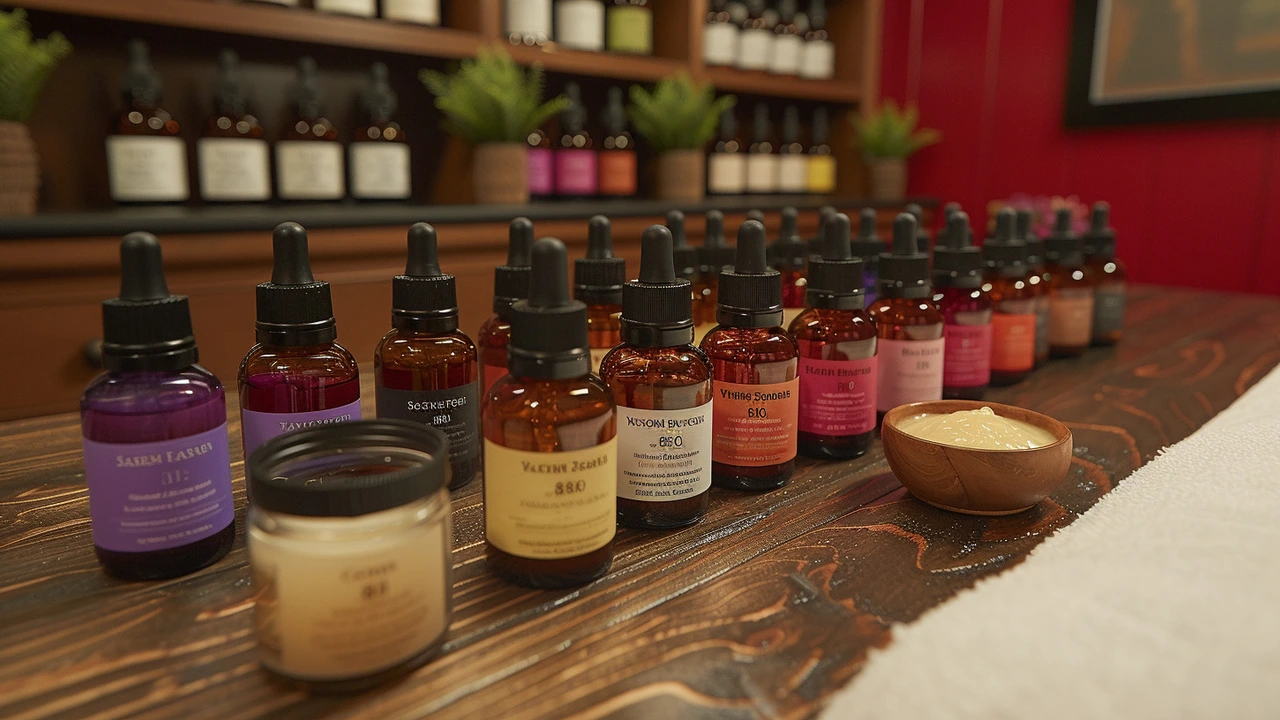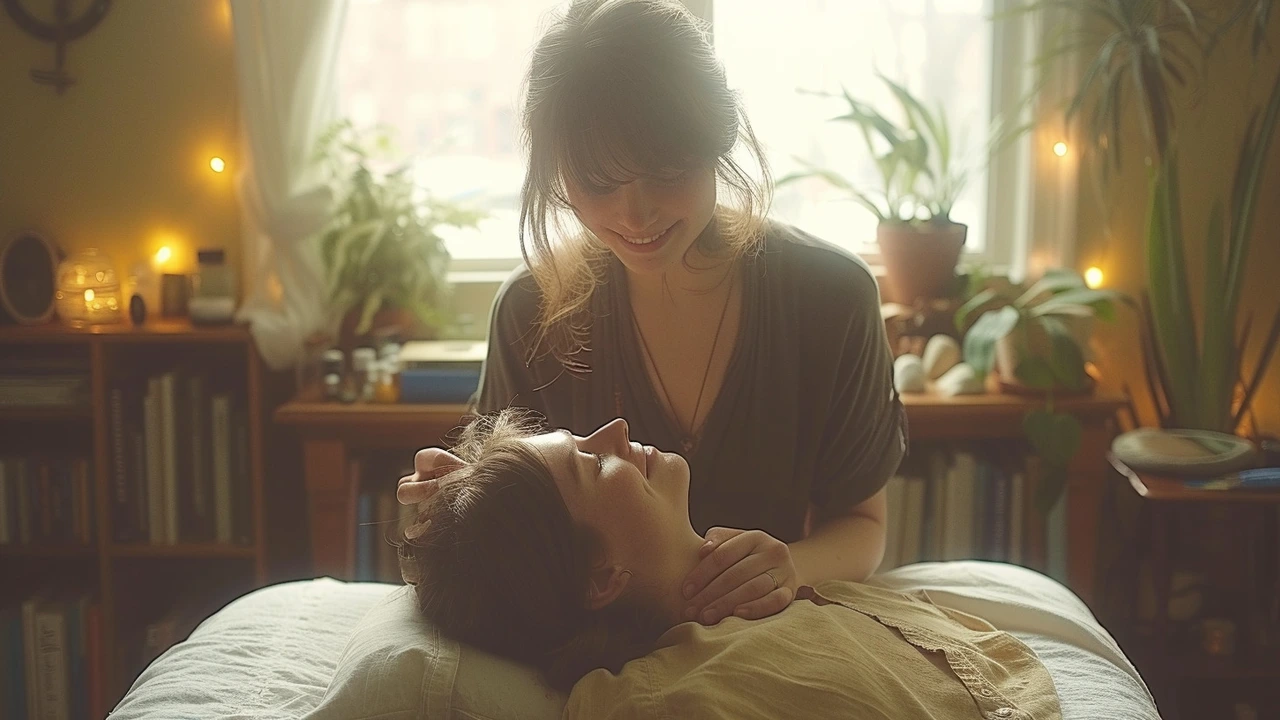Explore Reflexology Benefits: A Comprehensive Guide to Natural Healing Techniques
 Dec, 21 2023
Dec, 21 2023
Introduction to Reflexology: More Than a Fancy Foot Rub
When most folks hear the term reflexology, they might imagine a glorified foot rub or, at worst, a pseudoscientific spa treatment. But, as someone who's tiptoed through the world of wellness and alternative therapies, I'm here to tell you there's much more than meets the eye—or rather, the foot! Reflexology is an intricate dance of applying pressure to specific points on the feet (and sometimes hands and ears) with the belief it can promote healing in other parts of the body. Sounds like magic? Perhaps it does, but there's a growing chorus of individuals who swear by its effects, and I'm one of the chorus members.
Feet—they're not just there to help us stand and endure the excruciating pain of breaking in a new pair of heels. No, these humble appendages, according to reflexology, are a map to our well-being, with areas corresponding to organs and systems of the body. By pressing, kneading, and poking these areas in a way that's far less ticklish than you'd imagine, practitioners aim to bring about balance and harmony within. I'll admit, when I first heard of this, I was skeptical. But then I remembered how a day back, Maximus, my poodle, was so intuitive to the pressure points on my feet—it was as if he knew reflexology! And if a dog gets it, there must be something to it, right?
History and Origins: Reflexology's Footprints in Time
Let’s stroll down the history lane for a moment here—reflexology isn't the product of the wellness boom of the 21st century, oh no. Its roots can be traced back to ancient civilizations like Egypt and China, where it was revered for its therapeutic benefits. Fast forward to the 20th century, and we see a resurgence of interest thanks to folks like Eunice Ingham, the founder of modern reflexology. She was a determined woman who charted the foot maps we use today and stubbornly promoted reflexology through the United States in the 1930s and beyond.
I love a good origin story, especially when it involves a fierce woman beating the odds. Eunice was like the Indiana Jones of reflexology—exploring, discovering, and making it all look absolutely epic. I like to imagine her treating clients and uncovering the wonders of the feet with a fedora on her head and a whip by her side, but that's probably just the movie fanatic in me talking. Regardless, the history of reflexology sets the stage for understanding its current popularity and begs us to ask: if something has been around for so long and in so many cultures, doesn't it warrant a closer look?
Reflexology in Action: The How and Why
So, how does a reflexology session go down? Well, let me take you through the steps. First, you remove your shoes and socks (obviously), and then the reflexologist begins their examination of your feet. This isn't your regular footsie game—it's a thorough inspection that somehow feels like they’re reading your life through your soles. The actual reflexology part involves a variety of pressures, strokes, and techniques to work on different points. The reflexologist is like a DJ mixing on decks, but instead of beats, they're syncing your body's rhythm.
The why part is where it gets fascinating. Each pressure point on the foot allegedly corresponds to different parts of the body. A spot near the toe might relate to the head or sinuses, while a point on the arch could connect to the kidney. It's like each foot is a puzzle, every little piece representing an aspect of your overall health. I remember once during a session, the practitioner pressed a spot that made me yelp, and they explained it was linked to stress—considering I was juggling deadlines like a circus performer at the time, I wasn’t too surprised!
Benefits Aplenty: Unwinding the Potential of Reflexology
Where to start with the benefits?! Advocates highlight a laundry list of positives: stress relief, relaxation, improved circulation... the list goes on. It's like reflexology is the Swiss Army knife of alternative therapies—ready to tackle everything from headaches to digestive issues with just a few strategic presses.
For me personally, the relaxation aspect is hard to beat. As someone who embodies the very definition of ‘high-strung’ if left to my own devices, finding a practice that helps me unwind is akin to discovering a unicorn in my backyard. After a session, I feel like I've gone through a reboot; even Maximus can sense the change as he cuddles up next to a much calmer me. Now, I'm not saying reflexology is a cure-all—nope, I'll leave that claim to snake oil salesmen. However, the soothing victory lap my mind and body take after is something I wouldn't trade for the world.
Scientific Backing or a Leaps of Faith?
Now, I know the skeptics out there are probably thinking, "But Adelaide, where's the science in all of this?" And you know what? That's a fair question. While the scientific community hasn't fully embraced reflexology, there's a body of research that suggests it can be beneficial for certain conditions, like anxiety and PMS. Admittedly, the evidence isn't rock-solid like the kind that supports, say, gravity—but it's compelling enough to give reflexology a fair trial in the court of public opinion.
Keep in mind, too, that just because something isn’t fully backed by modern science (yet), doesn't mean it's without merit. I mean, let's not forget that once upon a time, people thought the idea of washing your hands before surgery was ludicrous. So, while reflexology may require a leap of faith, that faith could very well land you in a garden of wellbeing. Your body’s potential response to reflexology, albeit mysterious, could be as pleasantly surprising as finding an extra chocolate biscuit in your cookie tin—you just never know until you try.
Mind, Body, and Soul: The Holistic Trifecta
Reflexology taps into that ancient belief in the holistic connection between mind, body, and soul. When these three amigos are in harmony, like a perfectly synchronized boy band from the 90s, everything just works better. Think of how amazing you feel after a good laugh or a hug—it's all connected, and reflexology plays into this interconnectedness.
It's important to remember that reflexology isn't just about the physical touch—it's about creating an environment of calm and tranquility. When I'm lying there, and Ada my canary is serenading the house with her tunes, there's a serene vibe that takes over, allowing for a deeper level of relaxation. It's sort of like when your favorite song comes on, and you can't help but get lost in the music. Reflexology, in that sense, becomes more than just a foot-focused treatment; it's a full-on soulful experience that covers you like a warm blanket on a chilly night.
Choosing the Right Reflexologist: A Step in the Right Direction
Just like choosing a hairdresser or a dentist, finding the right reflexologist is a personal journey. It's like going on a first date—you want someone who listens, understands you, and doesn't judge you for having a second piece of cake (no regrets). Licenses and credentials are important, sure, but what truly matters is that you feel comfortable and trust the practitioner's expertise.
My first reflexologist was a delightful lady who smelled of lavender and had a smile that could light up a room. She had a touch that could only be described as having the same precision as a cat traversing a narrow fence—careful yet confident. It's crucial to choose someone who makes you feel at ease, because if you're tense or doubtful, you might as well be trying to relax in the middle of a honking traffic jam. So do your homework, ask for recommendations, and listen to your gut—it’s usually pretty smart, even if it does tell you to have that extra piece of cake sometimes.
Do It Yourself Reflexology: Feet First Tips and Tricks
Not everyone has the time or money to visit a reflexologist regularly—I get it, my budget is tighter than a pair of jeans straight out of the dryer. But fear not, because you can try some basic reflexology techniques on yourself. It's like being your own superhero, swooping in to save your day with the power of touch.
A simple start is by rubbing your feet in their entirety—squeeze, push, pull, but with loving intention, not like you’re trying to get the last bit of toothpaste out of the tube. Focus on areas that feel particularly tender or tight, because they might be the very pathways to your relief. If you hit a sensitive spot, don't go full superhero on it; be gentle—you're aiming to soothe, not to punish. And always remember to breathe—deep, calming breaths that can turn a frown upside down. Incorporating this little ritual into your daily routine can make a world of difference, like adding sprinkles to an already delicious cupcake.
Reflexology: The Journey Thus Far and the Road Ahead
My journey with reflexology has been nothing short of delightful, filled with little discoveries and “aha!” moments like finding an unexpected shortcut on your way to the market. It's a practice that has unfolded to me in ways that both confirm and surprise. While it may not be everyone's cup of herbal tea, the growing popularity of reflexology is a testament to its potential benefits and the universal quest for balance and health.
Looking ahead, I see reflexology gaining more ground as people continue to seek out holistic and natural ways to complement their health. It's like an indie film that slowly becomes a cult classic—everyone’s talking about it, and before you know it, it's a staple at the wellness Oscars. Whether you're a skeptic or a believer, there's no denying that reflexology is a fascinating modality with the power to touch lives, quite literally. So here's to whatever helps you find your balance—may your feet lead you to peace and your spirit to dancing, even if it's just in your living room with Maximus as your partner.





